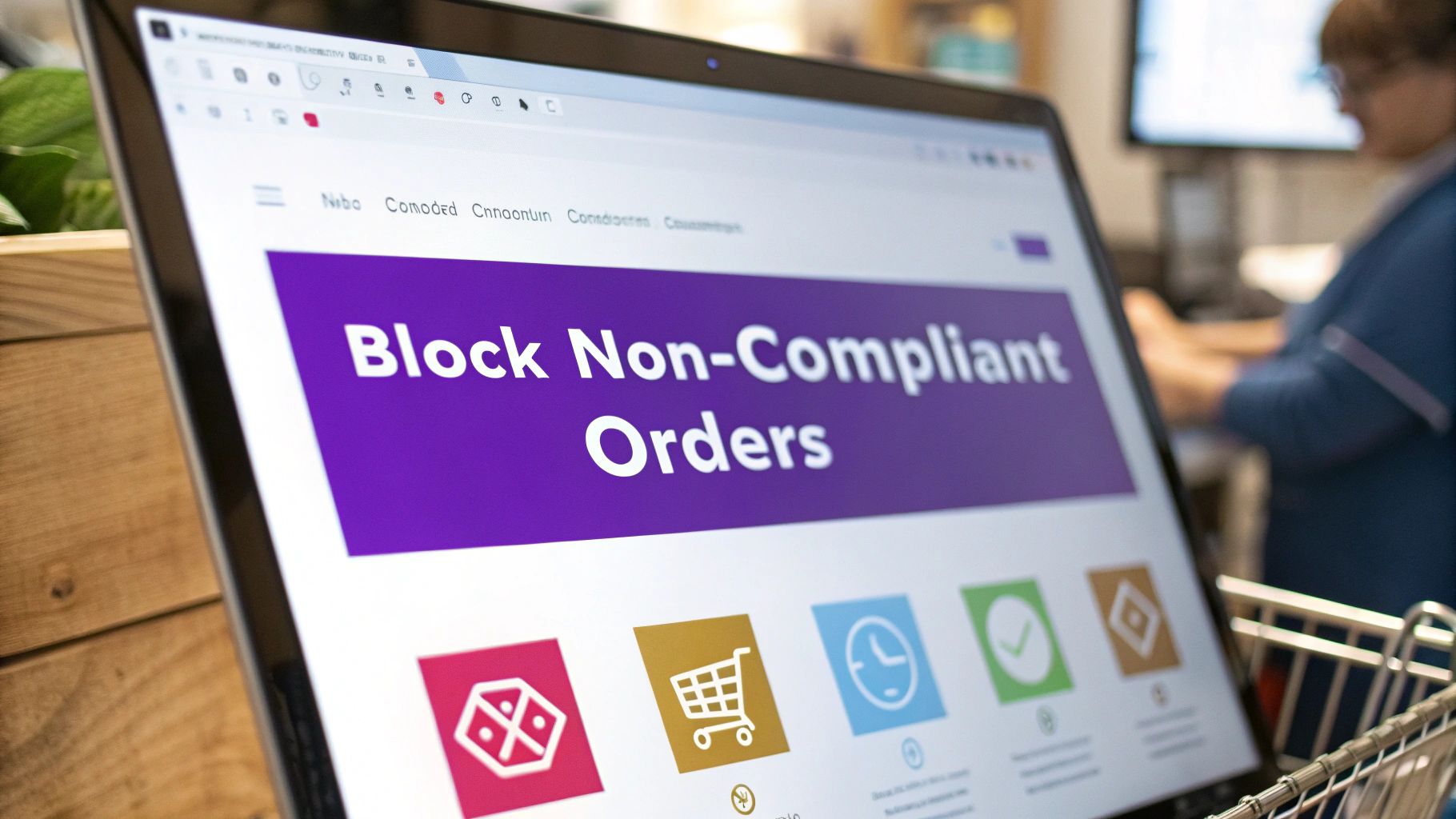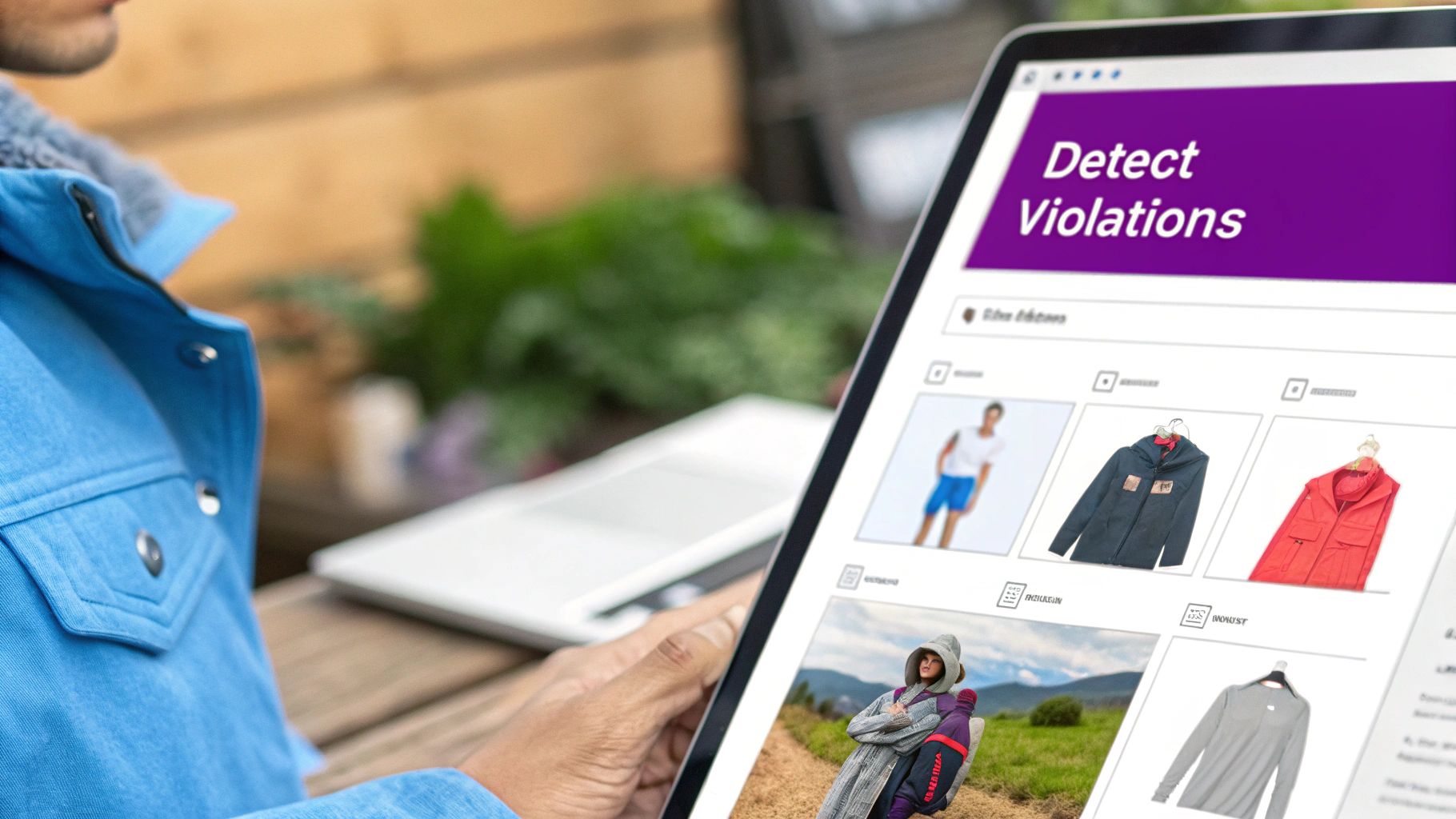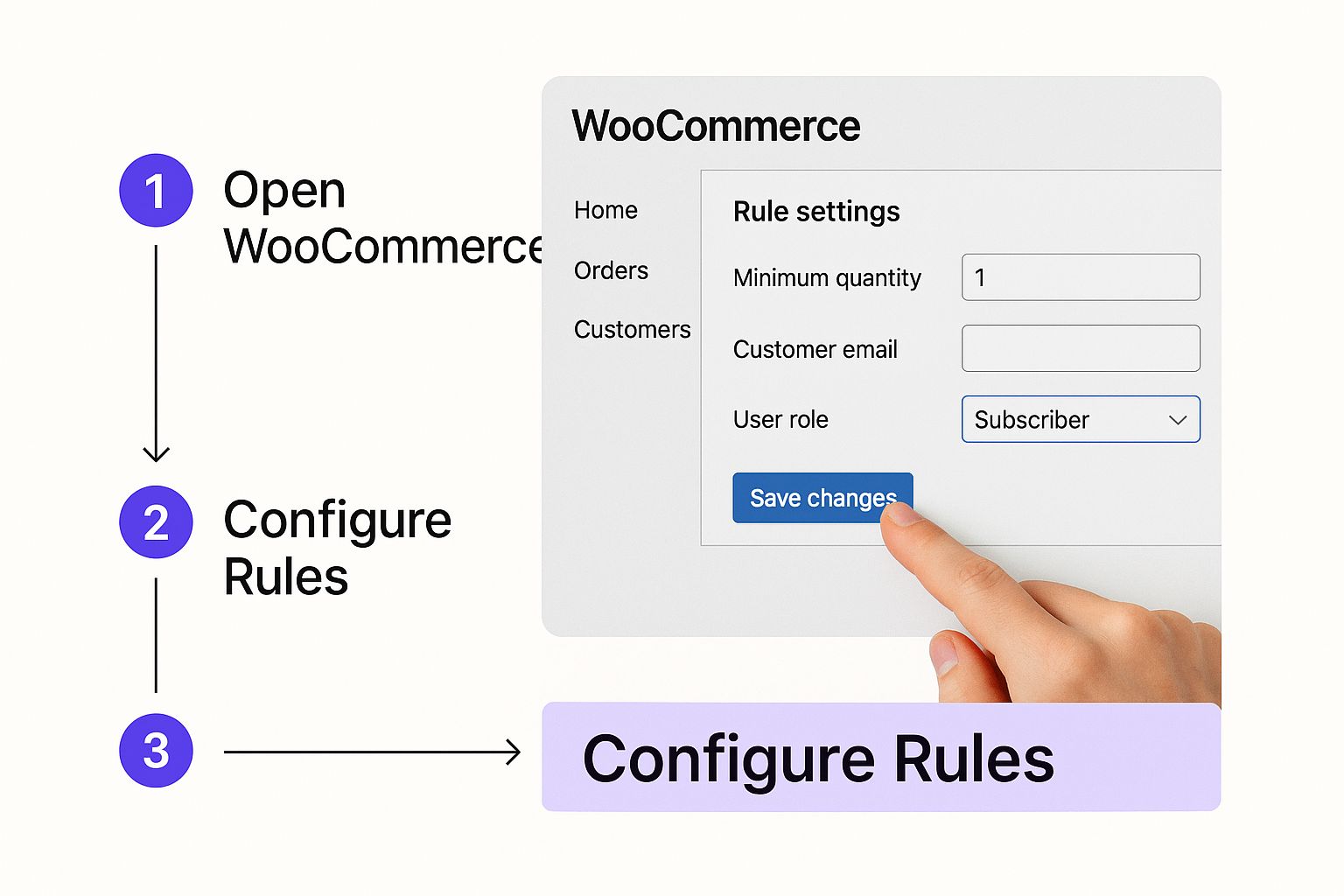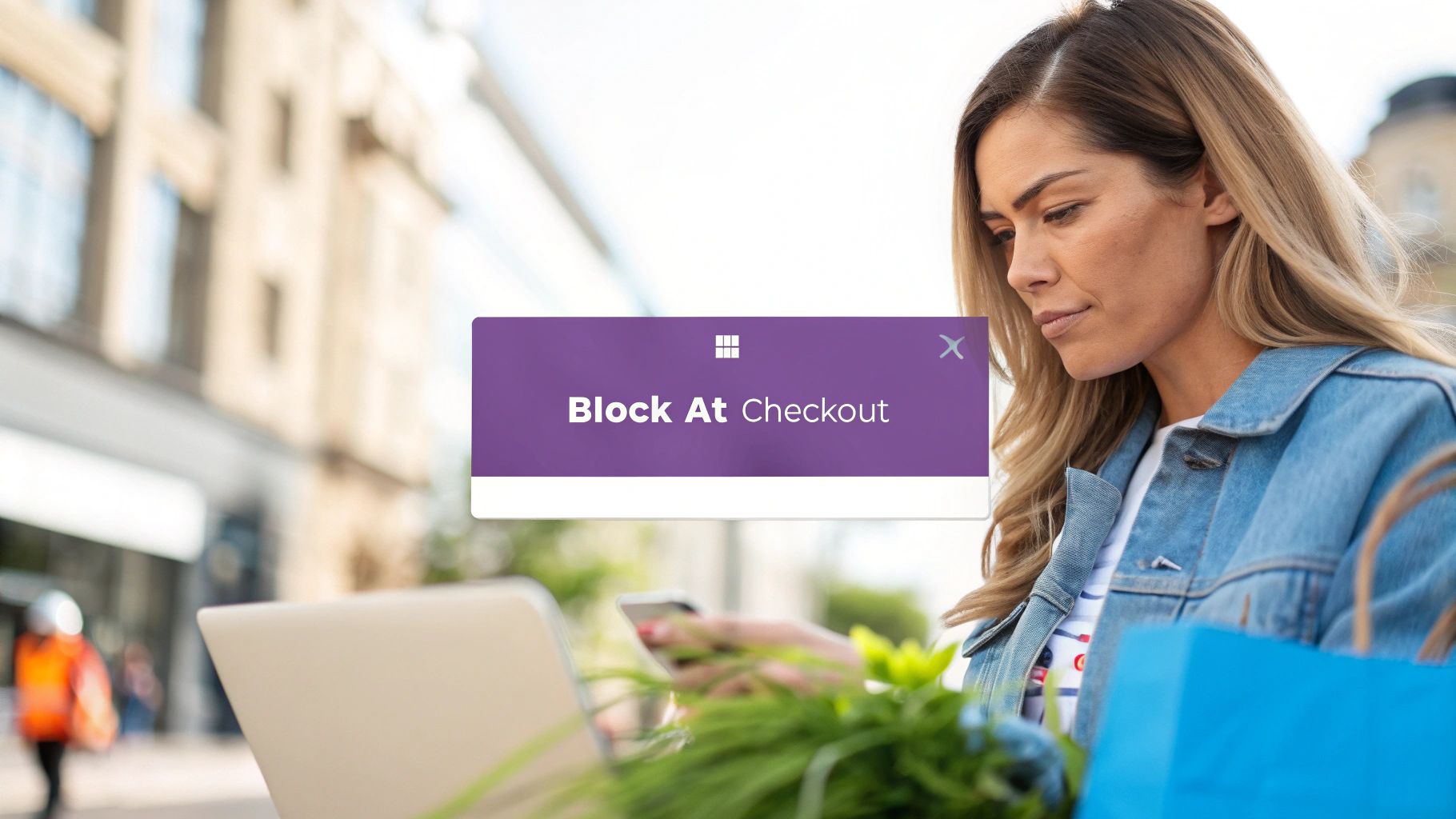
How to Block Non-Compliant Orders Before Checkout in WooCommerce
Learn how to block non-compliant orders before checkout in WooCommerce. Step-by-step guide to protect your store and improve order compliance.
Cody Y.
Updated on Sep 6, 2025
Every online store owner has been there: an order comes through that you just can't fulfill. Maybe it’s a shipping restriction, a quantity limit, or a customer trying to buy two products that can’t be shipped together. The usual response is to cancel the order after the payment has already gone through, but that reactive approach is a recipe for operational chaos.
There’s a much smarter way. Using a tool like Ship Restrict lets you get proactive and stop these problem orders before they even start.
The Hidden Costs of Managing Bad Orders
Dealing with non-compliant orders after the fact might feel like a normal part of doing business, but it's a quiet killer of your time, money, and customer goodwill. Each canceled order isn't just a sale you lost; it’s the start of a domino effect that messes with your entire workflow.
This reactive process forces your team to drop everything and handle tedious manual work. Instead of growing the business, they’re stuck processing refunds, adjusting inventory levels, and sending apology emails to frustrated customers. These conversations are never fun and can quickly tarnish your store's hard-earned reputation.
The Financial Drain of Reactive Management
The financial hit goes way beyond just the refund itself. A huge chunk of these hidden costs comes from understanding chargeback fees and how to avoid them. When a customer gets angry about a sudden cancellation, they might file a chargeback, which slaps you with steep penalties and can hurt your relationship with payment processors.
Let's put this in perspective. WooCommerce currently powers over 4.5 million websites, making it a massive player in the e-commerce world. Imagine the staggering financial loss across that entire ecosystem from orders that should have never been placed. For a platform handling that kind of global volume, blocking bad orders isn't a "nice-to-have"—it's an absolute business necessity.
The real cost isn't just the money you refund. It’s the employee hours wasted, the chargeback fees incurred, and the customer trust you lose with every single preventable cancellation.
This is a classic case of reactive versus proactive management. Let's break down what that really means for your store.
Reactive vs Proactive Order Management
This table paints a clear picture of the two approaches. On one side, you have the constant firefighting of post-checkout cancellations. On the other, the smooth efficiency of blocking bad orders from the start.
| Challenge | Reactive Approach (Post-Checkout) | Proactive Approach (Pre-Checkout) |
|---|---|---|
| Customer Experience | Negative. Customer is disappointed and frustrated by a sudden cancellation after paying. | Positive. Customer receives an instant, clear message explaining the issue before checkout. |
| Operational Workflow | Manual. Staff wastes time processing refunds, contacting customers, and updating inventory. | Automated. The system handles enforcement, freeing up staff for growth-focused tasks. |
| Financial Impact | Costly. Incurs transaction fees, potential chargeback penalties, and wasted labor hours. | Profitable. Prevents lost sales, eliminates chargeback risks, and protects your bottom line. |
| Brand Reputation | Damaged. Seen as unreliable, leading to negative reviews and lost customer loyalty. | Strengthened. Seen as professional and helpful, building trust and encouraging repeat business. |
| Inventory Management | Inaccurate. Inventory is temporarily allocated to an invalid order, risking overselling. | Accurate. Inventory is never committed to an order that can't be fulfilled. |
Ultimately, the choice is simple. Shifting to a proactive strategy that automatically blocks invalid orders before payment is the single most effective way to protect your profits and streamline your operations. It turns your checkout into an intelligent gatekeeper, making sure every order you approve is one you can fulfill with confidence.
Defining Your Store's Compliance Rules

Before you can start blocking non-compliant orders, you have to nail down what "non-compliant" actually means for your store. This isn’t some one-size-fits-all definition; it’s a specific set of rules shaped by your product line, your shipping logistics, and the legal frameworks you operate within.
The very first step is to map out every condition that could cause an order to get flagged. Think of it as creating a playbook for your store's logic. Digging into how to transform your regulatory compliance can give you a solid foundation for building an automated system that protects your business from expensive mistakes and fulfillment headaches. It all starts with identifying the order conflicts you’re currently fixing by hand.
Common Compliance Scenarios
What are the most common reasons your team has to manually hold or cancel an order? Those recurring problems are the perfect place to start automating.
Here are a few classic examples I see all the time:
- Geographic Restrictions: This is a big one. You might need to prevent sales of specific items to certain states, counties, or even a list of ZIP codes. A common scenario is a firearms retailer blocking a magazine sale to a customer in a restricted state.
- Quantity and Weight Limits: Maybe you need to cap a promotional item at one per customer. Or perhaps your shipping carrier has a hard weight limit that certain product combinations might exceed.
- Customer Role Rules: A classic e-commerce problem is ensuring only verified wholesale accounts can purchase products at wholesale prices. This rule stops retail customers from accidentally (or intentionally) getting a discount they shouldn't.
- Product Incompatibilities: Some things just can't ship together. Think frozen goods and sensitive electronics in the same box—a recipe for disaster. This rule blocks the customer at checkout before the order is even placed.
When you don't block these orders proactively, they often land in your 'On hold' or 'Cancelled' queue after the customer has already paid. That creates a ton of unnecessary work and can frustrate buyers. In fact, roughly 5-10% of online payments globally end up needing some kind of manual review when they aren't stopped at the source.
Getting these rules defined clearly is the absolute bedrock of a solid pre-checkout blocking strategy. To dive deeper, check out our guide on e-commerce shipping compliance to build out a more comprehensive framework for your store.
Alright, you've mapped out your store's compliance rules. Now for the fun part: putting them to work. We're going to use Ship Restrict to set up a few essential blocks that will immediately make your life easier. The whole point is to stop those problem orders before they even become orders, all without touching a single line of code.
For instance, a classic headache is blocking specific products from shipping to certain states due to local laws. Instead of finding these orders after the fact and manually canceling them, you can build a rule that stops the checkout cold. If a customer from a restricted state tries to buy a flagged item, they simply can't complete the purchase. This one change can save you hours of admin work every week.
This is what it looks like inside your WooCommerce dashboard—a straightforward process to get these rules configured.

As you can see, it's all about translating your business logic into automated rules with just a few clicks. No developer needed.
Creating Your First Geographic Restriction
Let's walk through a real-world example. Say you sell a brand of artisanal coffee that, due to agricultural regulations, can't be shipped to Hawaii. Trying to catch these orders manually is a recipe for mistakes and unhappy customers.
Instead, you can create a precise rule.
Inside Ship Restrict, you'd specify the product (or an entire product category) and then select "Hawaii" as the restricted destination. Once you hit save, any customer who enters a Hawaiian shipping address with that coffee in their cart will see a clear message and won't be able to proceed.
The real power here is that it’s proactive. The customer is told why they can't check out, right on the cart page. This transparency prevents the awful experience of a post-payment cancellation and helps them adjust their cart to complete a valid purchase.
Another foundational rule to set up is for cart quantity. Maybe you have a promotional item limited to one per customer. A simple rule can block checkout if the quantity for that specific product is greater than one, preventing promo abuse and keeping your inventory fair for everyone.
For more complex situations, you might want to look into WooCommerce shipping restrictions based on product category, which lets you manage entire groups of products at once.
Getting these first few rules in place is the fastest way to build a smarter, more efficient checkout. By targeting your most common compliance headaches first, you can immediately cut down on the operational drain of fixing bad orders and start protecting your bottom line.
Automating Complex Rules with Conditional Logic
Your business isn't one-size-fits-all, and your compliance rules shouldn't be either. While basic blocks for states or product quantities are a good starting point, the real magic happens when you start layering conditions to handle your store’s unique, complex scenarios. This is how you transform a simple restriction tool into an intelligent, automated gatekeeper for your checkout.
Think about a common situation: you only want registered wholesale customers to purchase specific bulk-packaged products. With conditional logic, you can build a rule that checks for two things at once: Is the user’s role "Wholesaler," and does their cart contain a product from the "Wholesale" category? If both conditions aren't met, checkout is blocked. Simple. This instantly prevents retail customers from snagging inventory and pricing that isn't meant for them.
Real-World Conditional Logic Examples
The possibilities for combining rules are practically endless. You can craft incredibly nuanced logic that perfectly mirrors how your business actually operates, without needing any manual oversight.
Here are a few practical scenarios I’ve seen work wonders:
- User Role + Cart Subtotal: Block checkout for wholesale users if their cart subtotal is less than $500. This is a simple and effective way to enforce a minimum order value just for that specific customer group.
- Product Category + Shipping State: Prevent checkout if a cart contains items from the "Ammunition" category and the shipping state is "California," while still allowing other products to be shipped there without issue.
- Guest User + Specific Product: Automatically block guest checkout for any order containing a high-value or regulated item. This forces account creation, which is great for better tracking and customer verification.
This level of automation is more than just a convenience—it’s a necessity. Fraudulent or non-compliant orders make up an estimated 1-3% of all e-commerce transactions. By disabling guest checkout in specific high-risk scenarios, which can reduce fraud attempts by up to 40%, you actively protect your business.
By combining multiple conditions, you completely eliminate the need to manually review orders that don't fit your business rules. The system makes the decision for you—instantly and accurately, every single time.
This approach is a perfect example of how to automate repetitive tasks by applying those principles directly to your checkout compliance. It saves countless hours and prevents expensive mistakes.
If you want to dive deeper into setting up these kinds of intelligent systems, check out our guide on automated shipping compliance for WooCommerce stores. Using conditional logic is exactly how you block non-compliant orders before checkout in WooCommerce with total precision.
Crafting a User-Friendly Blocking Experience

Successfully blocking an order is only half the battle. If a customer doesn’t understand why they can’t check out, they’ll just get frustrated and leave. A vague, poorly explained restriction feels like a broken website, which can kill trust and send your cart abandonment rate through the roof.
The key is to swap out those cryptic error codes for clear, helpful guidance. Your goal is to empower the customer to fix the issue themselves and complete their purchase. So instead of a dead-end message like "Checkout failed," you need to explain the exact problem in plain English.
Writing Effective Blocking Messages
This is not the place for technical jargon. Your customer doesn't care about "compliance rule validation"; they just need to know what to do next.
Let's look at a simple comparison:
- Bad: "Rule #403 violation detected. Transaction blocked."
- Good: "Sorry, we can't ship this specific item to California. Please remove it from your cart to complete your purchase."
See the difference? The second approach turns a frustrating dead end into a guided solution. It's about being helpful, not just putting up a wall.
Your error message is a critical piece of customer service. It should be clear, concise, and actionable. Explain the problem and provide the solution in the same breath.
Where you show this message is just as important as what it says. Don't wait until the final payment step to spring it on them. The message needs to appear right on the cart page, giving customers a chance to make adjustments long before they’ve entered their credit card info. This kind of proactive communication is essential when you block non-compliant orders before checkout in WooCommerce.
Common Questions About Blocking Orders
When you first start blocking non-compliant orders in WooCommerce, a few questions always seem to pop up. Let's walk through the most common ones we hear from store owners.
Will Adding These Rules Slow Down My Website?
Not in any way you'll notice. A well-built plugin like Ship Restrict runs these compliance checks on the server, and it's incredibly efficient.
The reality is, the tiny bit of processing time it takes is nothing compared to the hours you'll save by not having to manually cancel bad orders, process refunds, and deal with frustrated customers. The tradeoff is a massive net win for your store's operations.
Can I Create Rules For Wholesale Customers Only?
Absolutely. This is a classic use case. Modern restriction plugins let you build rules using conditional logic, and one of the most powerful conditions is user role.
This means you can set up specific rules—like minimum order quantities or product restrictions—that only apply to users with a "Wholesaler" role. Your regular retail customers won't even know the rule exists. It’s the perfect way to enforce different business logic for different customer segments without cluttering the checkout for everyone.
Blocking an order is a foolproof method. It prevents the customer from proceeding to payment until the cart issue is resolved, ensuring no non-compliant order ever gets through. Hiding a shipping option is only a partial solution, as a customer might still select another incorrect method.
What If I Need a Really Specific Rule?
Most robust restriction plugins are built with flexibility in mind. They usually include hooks and filters that allow a developer to jump in and add custom logic with just a small code snippet.
So, if you have a unique business requirement that isn't covered out of the box, you're not stuck. This extensibility means you can address almost any weird edge case without having to commission a completely custom solution from scratch.
Take control of your checkout and finally put an end to costly shipping mistakes. With Ship Restrict, you can automate your compliance rules in minutes. Get Ship Restrict today!

Cody Yurk
Founder and Lead Developer of ShipRestrict, helping e-commerce businesses navigate complex shipping regulations for regulated products. Ecommerce store owner turned developer.